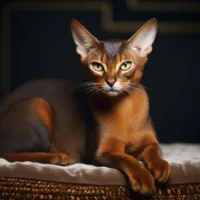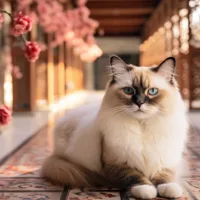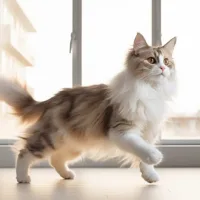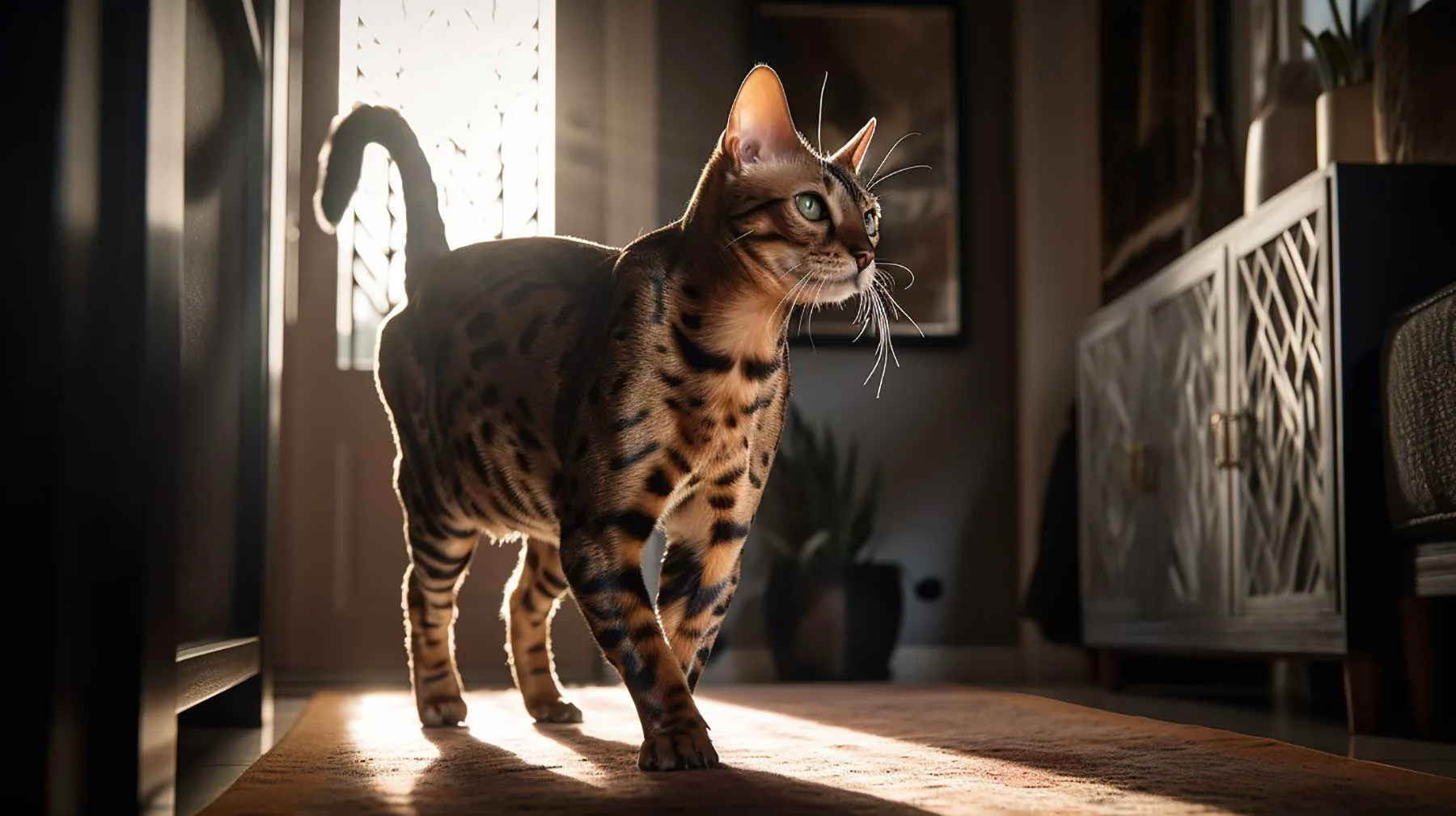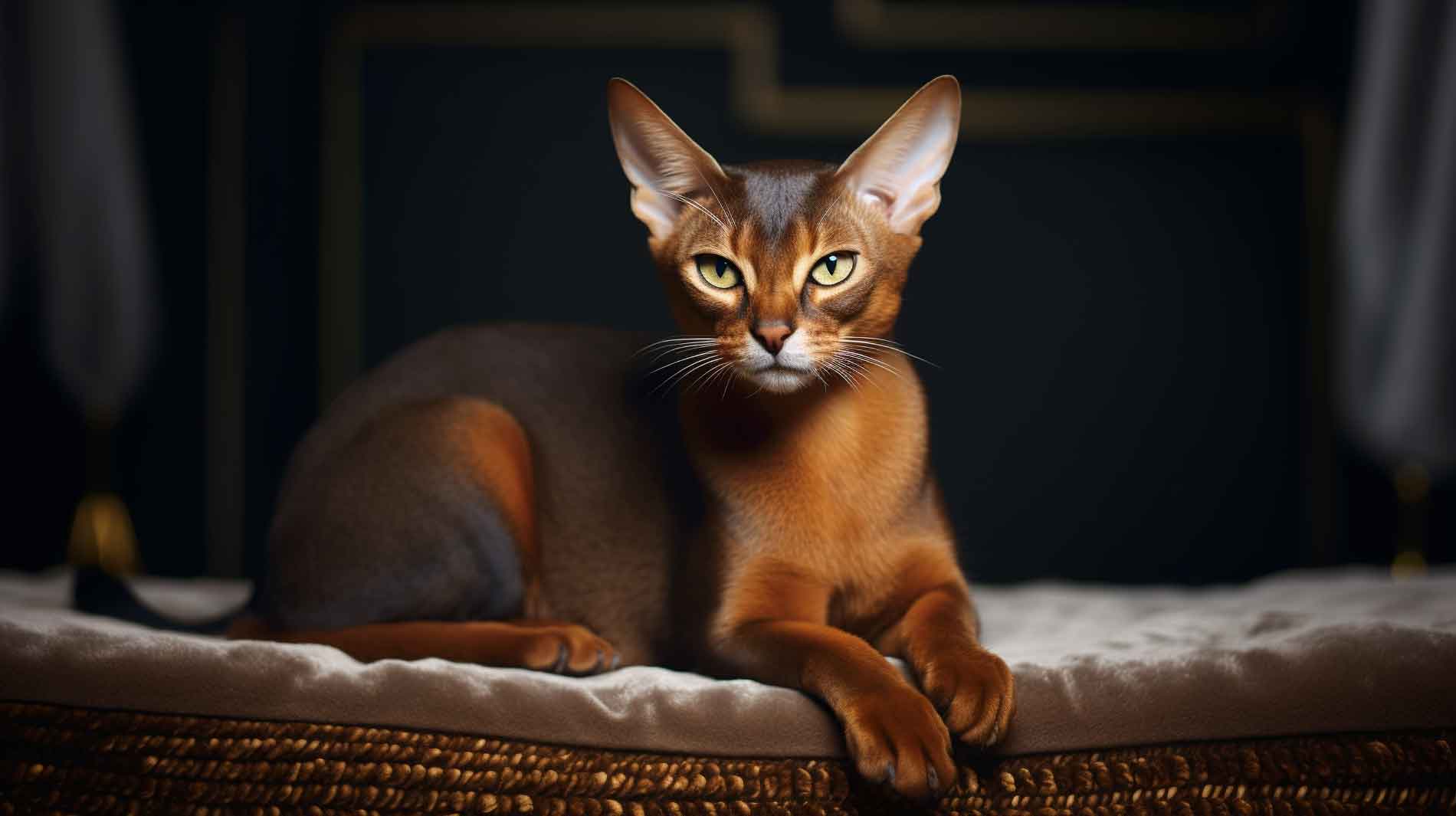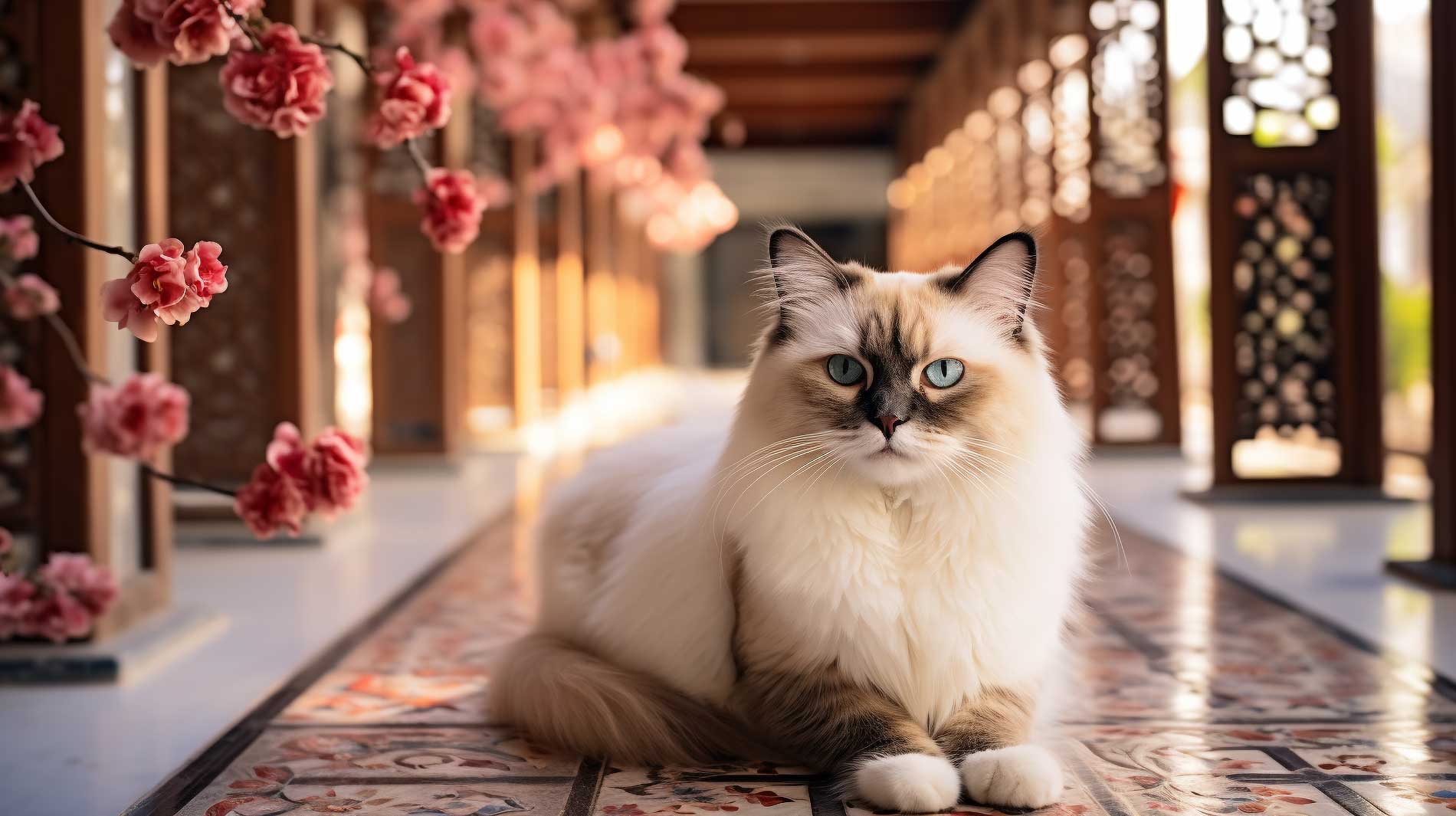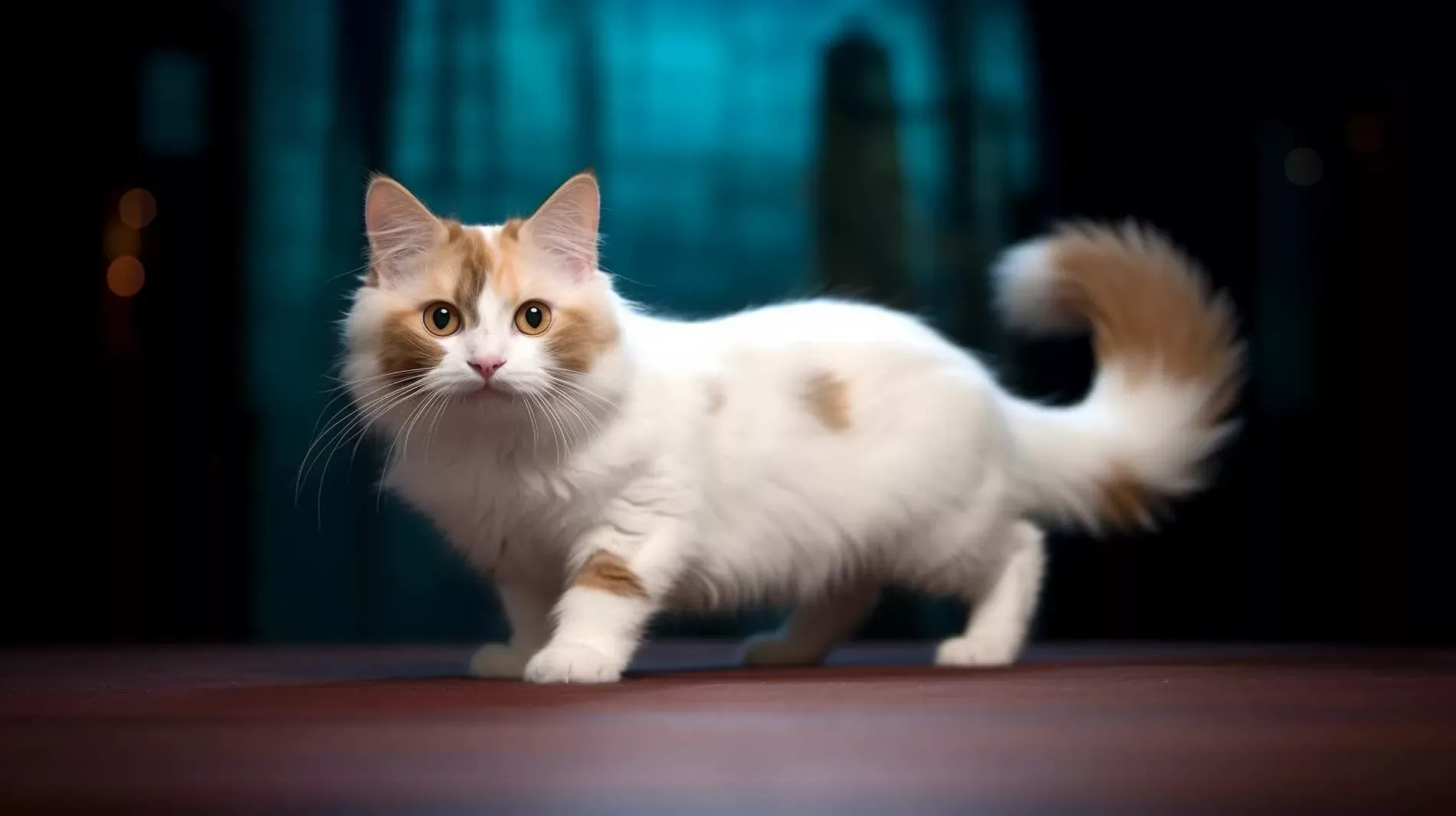Bengal cat look & fur – from wild roots to domestic glam
Bengal cats are of medium to large size and have a striking pattern, which is not coincidentally reminiscent of a wild cat. In the family tree of every Bengal, a small wild leopard cat can be found (more about this under history). There are two basic coat patterns: Spotted and Marbled. For the breed standard, the more contrast, the better. The rosette pattern of the spotted Bengal is unique among domestic cats. Normally, these are reserved only for wild relatives, such as the leopard, jaguar, ocelot, or margay.
Their characteristics are short, close-fitting, silky fur, a slightly triangular face, and a muscular, agile body. Some peculiarities they show: The hind legs are longer than the front legs, which is noticeable when walking by a slightly elevated hind quarter. Also, their head is longer than wide, and the bridge of their nose is wider at the top than that of other breeds.
Her external characteristics are short, close-fitting, silky fur, a slightly triangular face, and a muscular, agile body. Some peculiarities she has: The hind legs are longer than the front legs, which is noticeable when walking by a slightly elevated rear end. Also, her head is longer than wide, and the bridge of her nose is wider at the top than that of other purebred cats.
Their coat only requires conscientious grooming once a week. Mainly, this is more useful to check your cat’s body for its health condition. Some, but not all Bengal coats shimmer almost like silk spun with gold or like mother-of-pearl (depending on the base color) and are beautiful to look at. This shimmer is called glitter and is unique in the pedigree cat kingdom! Glitter is actually just the reflection of light from hairs that are hollow and translucent. These are caused by a recessive gene. There are even DNA tests to check whether a cat has one or two glitter gene copies – only with two copies will the coat actually glitter. However, not every Bengal’s fur glitters like this from birth. In fact, kittens enter the “fuzzing” phase at just a few weeks old, where they remain until they are about 3 months old. During this time, their coat is long, dark, fuzzy, and their coat pattern appears washed out. This cute fuzz is for camouflage and is more prevalent in the first two generations.
The basic colors of Bengals that are recognized generally are brown, snow, and silver. Brown and silver Bengals often have green or golden eyes, the lightest variation of a Bengal cat with snow colored coat always has blue eyes, but there are also variations of snow that have greenish or golden eyes. Organizations other than TICA also recognize blue, charcoal, and black as primary colors.
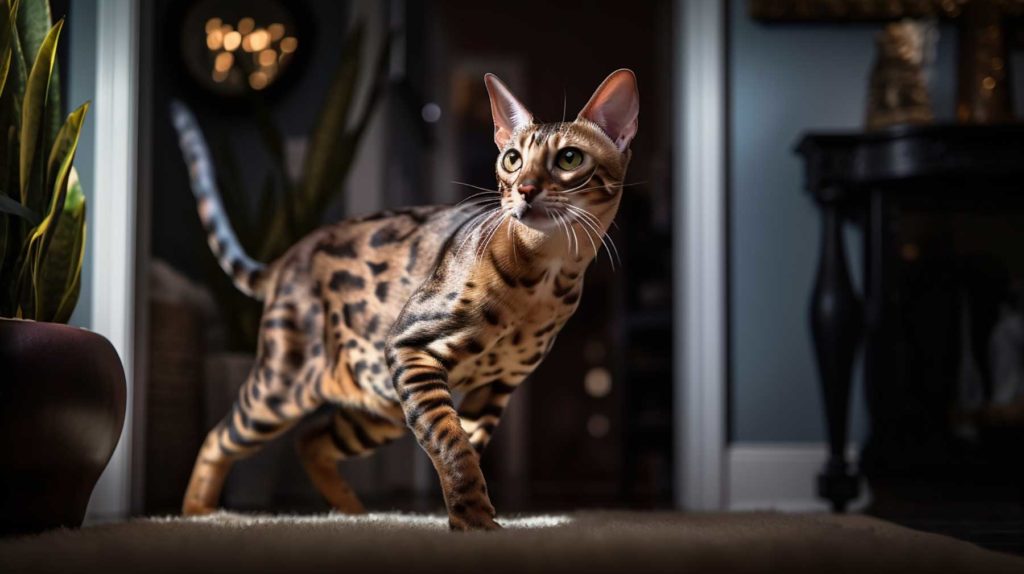
Bengal cat health – risks and concerns
Bengals can inherit certain health problems. These include cataracts, better known as gray star, progressive retinal atrophy (PRA), and hypertrophic cardiomyopathy (HCM). Responsible breeders take steps to detect or, if possible, prevent these problems. A cataract is a clouding of the eye’s lens. Cataracts can develop with age, but sometimes inherited cataracts occur in young cats. PRA leads to progressive blindness, for which unfortunately there is no treatment. PRA in Bengals is thought to be caused by a recessive gene. The Veterinary Genetics Laboratory at the University of California, Davis, in collaboration with the University of Missouri, has developed a genetic test for PRA. This can help breeders test for the gene early.
Hypertrophic cardiomyopathy (HCM) is the most common form of heart disease in cats and has also been diagnosed in Bengals. It causes enlargement (hypertrophy) of the heart muscle. If you’ve ever heard that the disease is caused by poor nutrition, it’s not true. The disease is hereditary, and researchers are working to identify the gene(s) involved in the development of HCM in Bengals. Until then, breeders should have their breeding stock examined annually for heart murmurs. Cats found to have HCM should be removed from breeding programs. Avoid breeders who claim to have HCM-free lines. To claim that one’s cats will never develop HCM is dubious.
Chronic kidney disease (CKD), chronic renal insufficiency (CRI), or chronic renal failure (CRF) describe a condition known in Bengals in which the cat’s kidneys begin to fail and usually affects older animals. Symptoms such as loss of appetite, increased thirst, diarrhea, vomiting, seizures, and bloody urine need to be investigated immediately. If CKD is detected early and treated properly, most cats with kidney disease can live relatively normal lives with some modifications and long-term treatment. However, there is no cure, and cats will eventually die because of it.
Another common disease of Bengals is Feline Lower Urinary Tract Disease (FLUTD), or Feline Idiopathic Cystitis (FIC) a condition that involves inflammation of the urinary bladder. It is commonly thought that stress may be the trigger for this disease. Other risk factors include an inactive lifestyle, obesity, age, not drinking enough water, and a history of chronic kidney disease or urinary tract disease. This condition is painful, so an affected cat often cries when urinating. If she manages to pass a few drops of urine, it will be dark or bloody. If these symptoms appear, your cat needs to go to the vet immediately to be treated as an emergency, because if left without treatment, she will not survive. But also, if your cat gets unclean, for example, urinating in a different place, this can be a symptom of FLUTD. If your cat has had FLUTD before, there is a high chance that the disease will recur.
Hip dysplasia, pancreatitis, gastroenteritis, and lymphoma may also be more common in the Bengal cat.
Bengal cat diet – fueling your domesticated wild cat
Thanks to the extremely high activity of the Bengal cat, she is happy with food that can meet her energy needs. This means that it should contain as much meat as possible, since all cats, due to their physiological disposition, derive the greatest benefit from animal ingredients. The stomach of a Bengal is somewhat more sensitive than that of some other pedigree cats, and it is particularly susceptible to stress. This can be reduced by avoiding unnecessary food alterations. To keep her big pretty eyes healthy, biotin is beneficial. Helpful for healthy teeth are whole chunks of meat where enough abrasion can take place to keep them clean. You’ll find all these great ingredients and more in high-quality cat food like Dynasty Emperor Ragout. With the Bengal cat, whose family tree always evolves from a wild leopard cat from Asia, this ragout is a perfect fit because it got developed with the cat’s natural prey in mind. The high moisture content keeps the kidneys and bladder well hydrated, which helps prevent inflammation, bladder or kidney stones, and other kidney diseases.
Bengal cat character – mischievous explorers and water-lovers
This breed loves everything that other cats love, but with quirks! For example, they can spend hours playing with water. Sometimes they put their paw in your water glass. Or the whole glass may get pushed to the floor to create a flow of water. If there’s nothing else to do, maybe they’ll turn their food into a bath duck. To avoid this, you can simply place the water bowl a little further away from the food. In summer she will be happy about a paddling pool with toys in the water, a special luxury for the Bengal cat because she loves to swim. In your four walls, you will probably see her trying to turn on the faucet. This is partly because of her love of water, but also because these cats generally tend to “puzzle”. They are incredibly curious and try things that other cats wouldn’t even think of, like investigating drawers, doors, and other openings. Accordingly, you need to make sure toilets are closed and you might even lock up when you go to shower, otherwise, your kitty will end up splashing in the toilet (a no-go, since most households use chemicals in the toilet) or standing next to you in the shower all of a sudden. A tip here: Get child safety locks for doors, trash cans, and toilet lids. And most importantly, get covers for electrical outlets and your cooktop with touch controls. Yes, you read that right – Bengals are the ultimate feline children. Thanks to their loud voice and a large vocabulary, you’ll definitely know when the fur boot pinches.
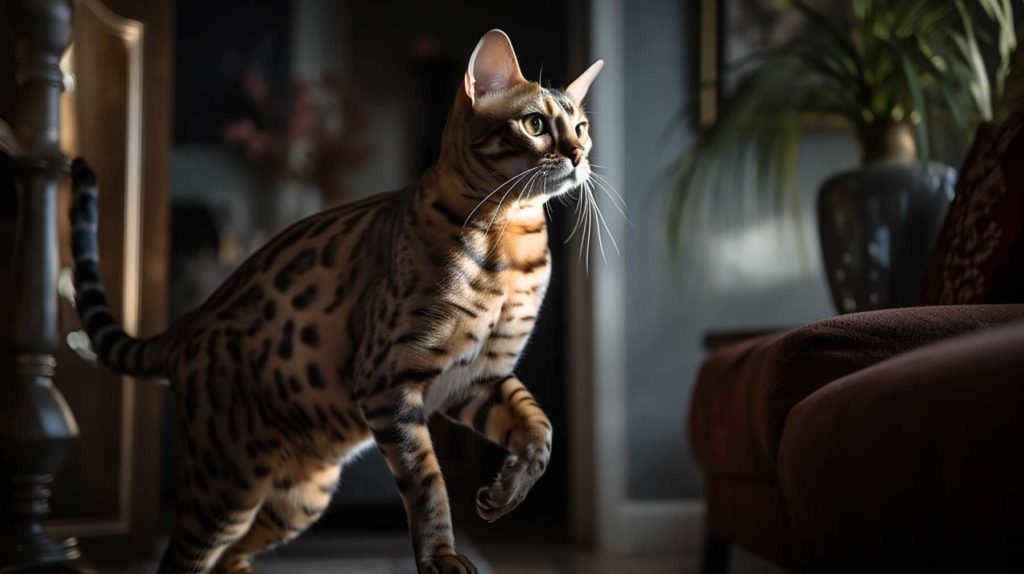
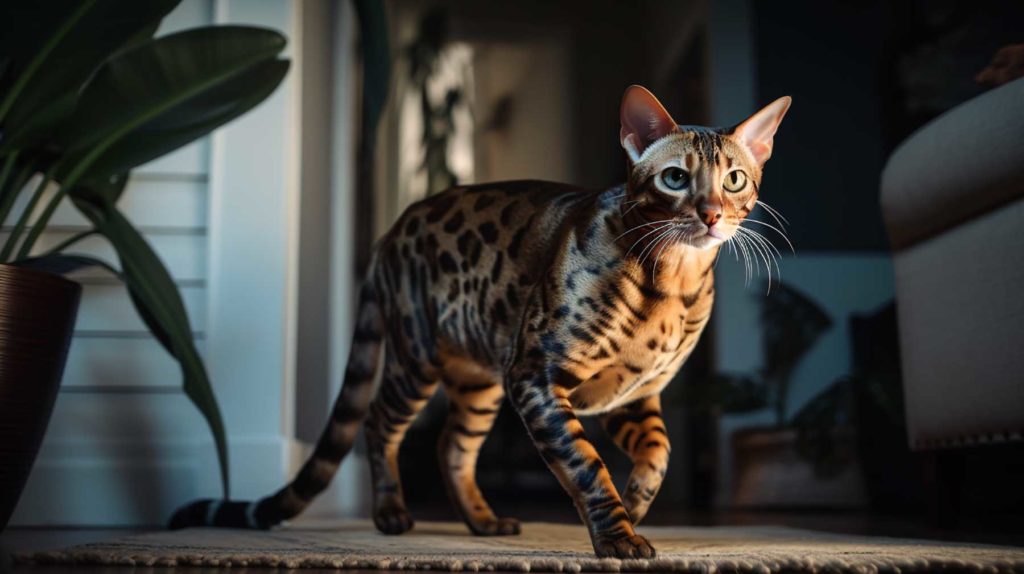
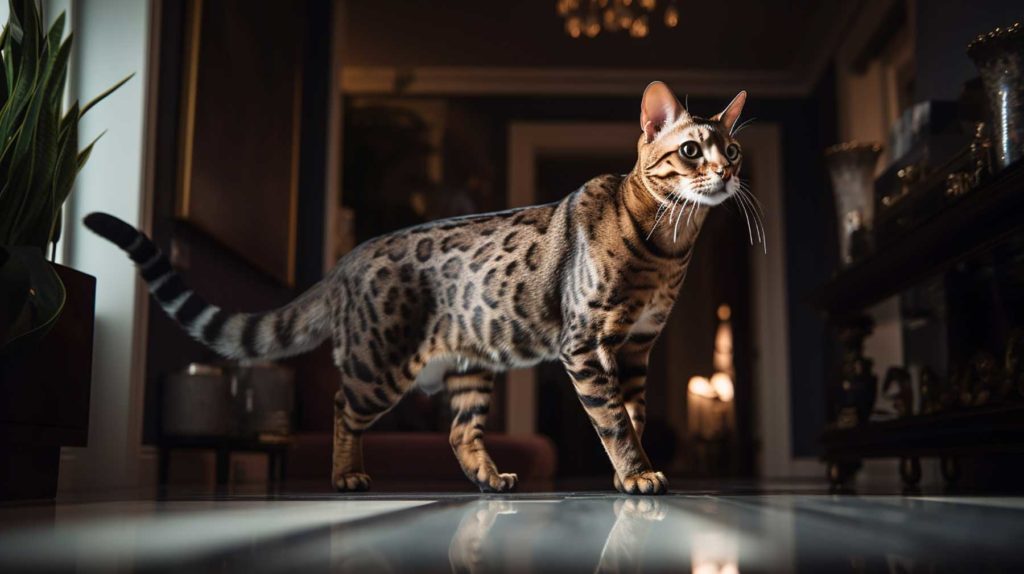
But that’s not everything that’s a little special about the Bengal cat. She is incredibly active and needs a lot of activity. If you do not meet this need, you will meet the same fate as all other cat owners who do not spend enough time with their furry companion: The interior suffers. When kitties “tear the place apart” or engage in other “nonsense,” it’s usually a sign that they’re not being kept busy enough. But in the case of this particular cat, there is also the fact that she has a habit of stealing, hiding, or drowning objects. And it is the stereotype of the cat that knocks down everything she finds when she is bored. That’s why daily play sessions with various toys like fishing rods, balls, and catnip mice are an absolute must for letting off steam. Like their wild ancestors, the Bengal cat likes to jump around on trees, which is why cat furniture is a valuable purchase. A so-called climbing wall is best. To create one, you can set up several scratching posts (which should be secured to the wall), and connect them with other wall elements that are covered with fur or sisal to give your cat a good grip and minimize the risk of injury. This creates a clear path for lots of movement. Not only can your feline run, jump, climb, and exercise on it, but you can also initiate agility and clicker training to challenge her intelligent nature and provide her with the mental stimulation she so desperately needs. It’s also exciting for cats to look out the window and observe other creatures or leaves floating around, for which elevated seating and resting areas along the walls all the way up to the ceiling are ideal.
The Bengal is also known to learn behaviors you’d associate more with dogs than cats, such as fetching, following “sit” and “stay” commands, and loving walks (best done with a harness for her safety). Oh, there was one more thing: they socialize well with dogs. You shouldn’t have small rodents and birds at home, though, because they love to chase them! As with all pedigreed cats, the following applies: Do not let them outside unsupervised, because there is a risk of theft. The Garden and balcony must be secured, if you want to allow your kitty independent outdoor exercise without a leash. Despite their challenging care requirements, Bengal cats are renowned for their devotion to their owners, often following them around and exhibiting an extraordinary degree of patience and affection.
Bengal cat history – a tough journey from wild to domestic
In 1963, Jean S. Mill crossed a domestic cat with the Asian leopard cat (Prionailurus bengalensis, hence the name), a spotted, small, wild cat species from Asia. This was the first attempt to combine the loving nature of a house cat and the striking appearance of leopards, ocelots, and jaguars. The modern Bengal cat traces its origins to cats bred by Mill in the early 1980s.
The history of the breed indicates that in the beginning breeding was difficult. Many kittens did not survive, and the first three generations produced only infertile males. So, at that time it was crossed back with the father. By the way, the Bengal cat was not recognized as a breed by the Cat Fanciers Association (CFA) until 2018! But by now Bengals from the fifth generation on are allowed to participate in the shows of the CFA. The first time this breed was recognized was in 1983 by The International Cat Association (TICA). It is said that the first Bengals with glitter that participated in shows were rubbed off by the judges in amazement because it was thought that they had been rubbed with mica (a metallic shimmering powder) to shimmer in such a way.
Wildcat Ancestors, Glamorous Descendants
Today, Bengals are still banned in some regions, like New York City or Hawaii. But there are differences depending on which generation they belong to, for example, Bengal cats are banned in Australia if they belong to generations one (F1) to three (F3). So you should definitely find out if you are allowed to keep them at all before you decide to get a Bengal. Animal welfare organizations highly recommend against buying Bengal cats due to concerns about the welfare of their wild, captured ancestors and the significant stress and discomfort experienced by the mother cat during breeding.
Suitable for experienced cat owners with large apartment or house and part time work
- Experience level: Experienced
- Housing: Large apartment or house
- Activity level: High
- Energy level: High
- Trainability: High
- Attachment: Medium
- Friendliness: Medium
- Playfulness: High
- Talkativeness: Medium
- Intelligence: High
